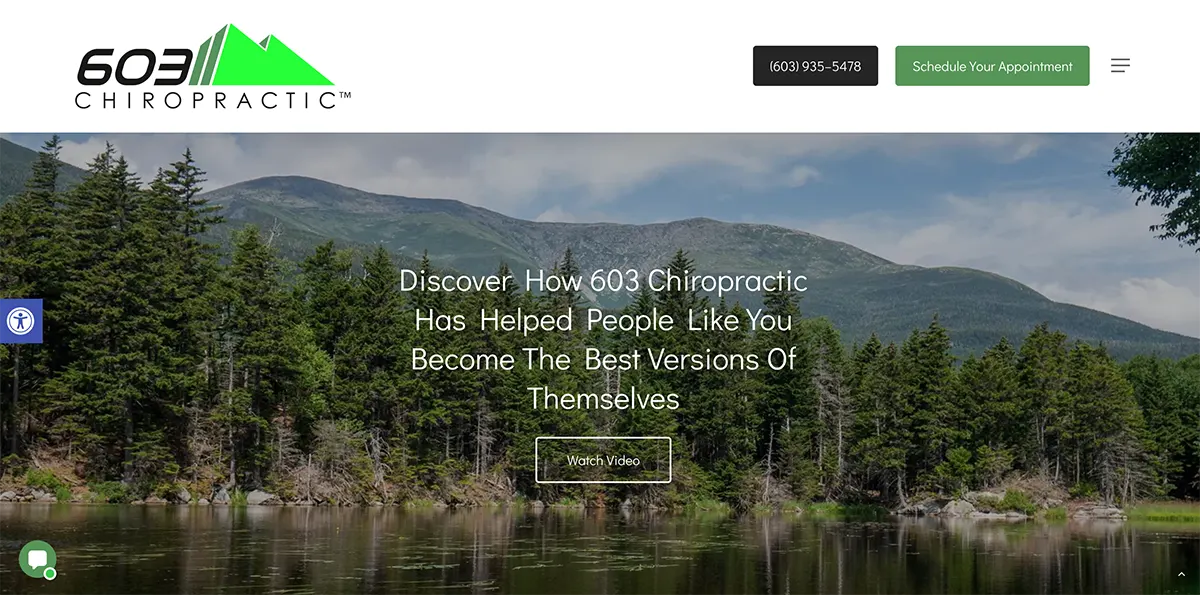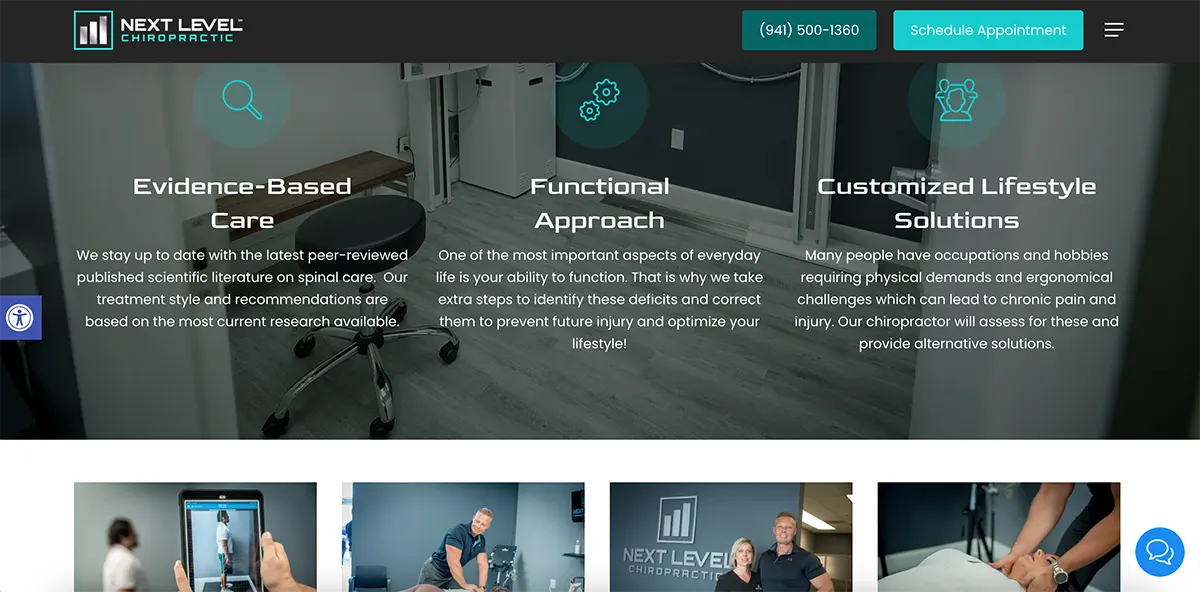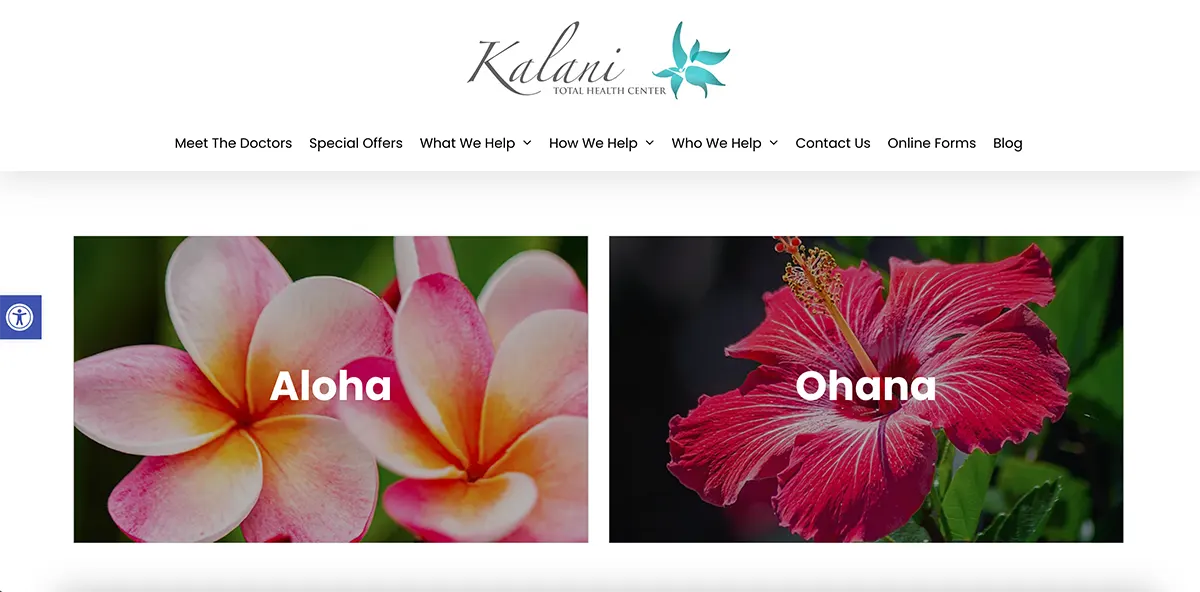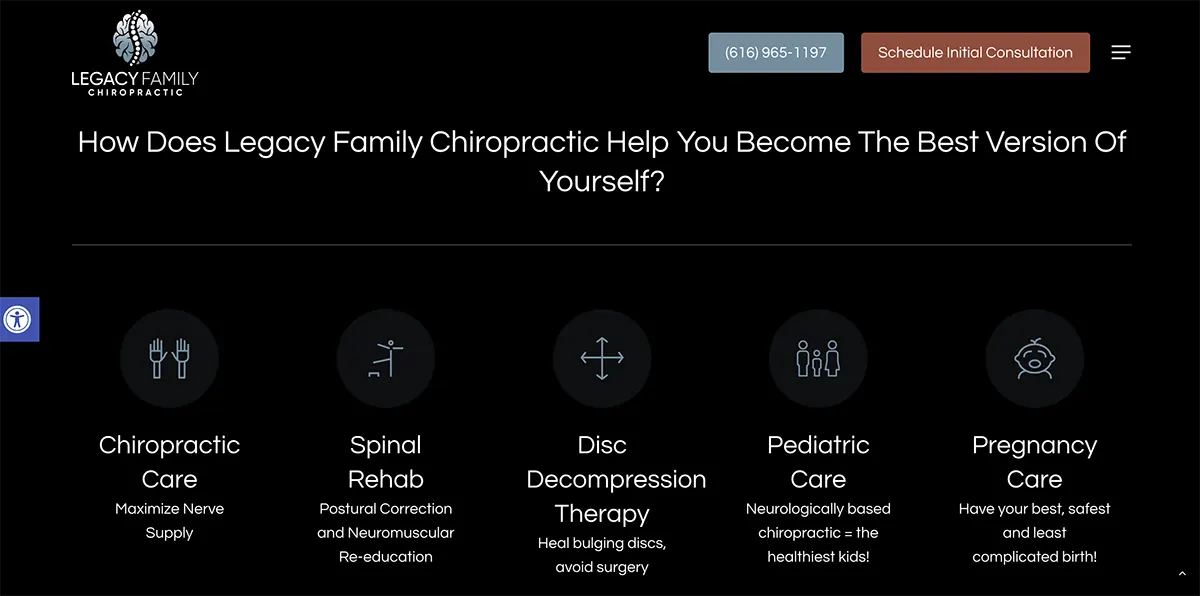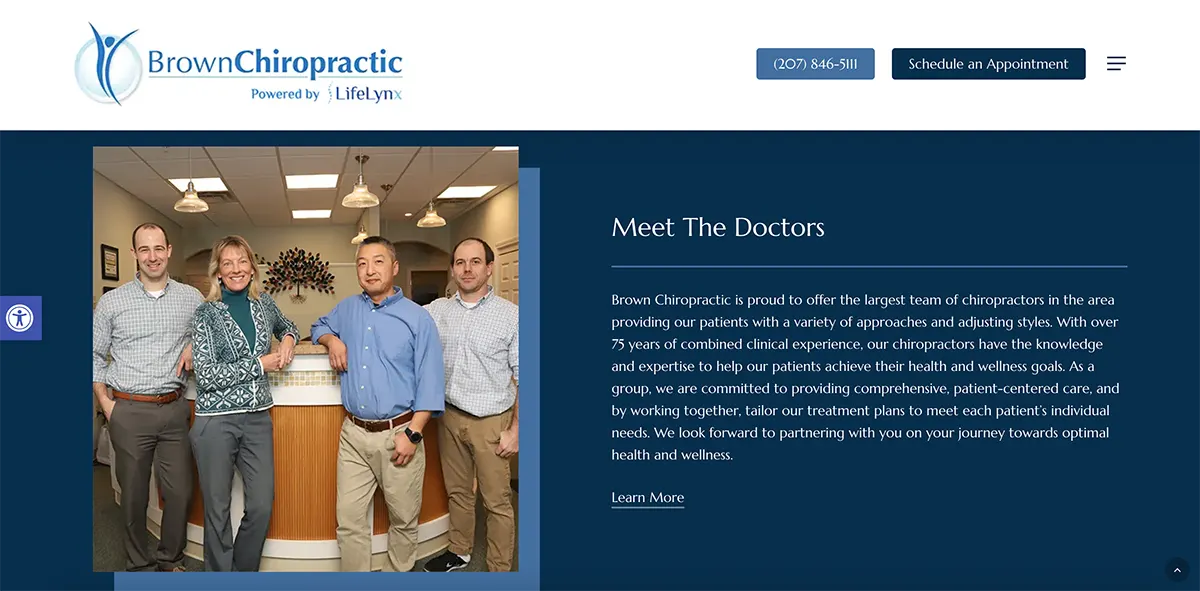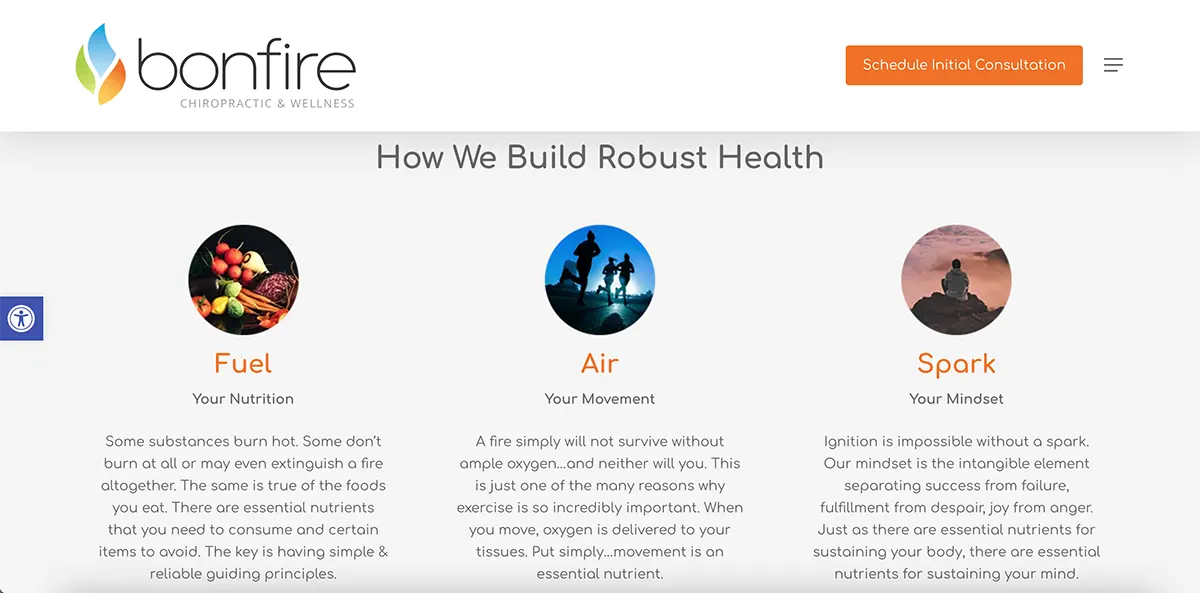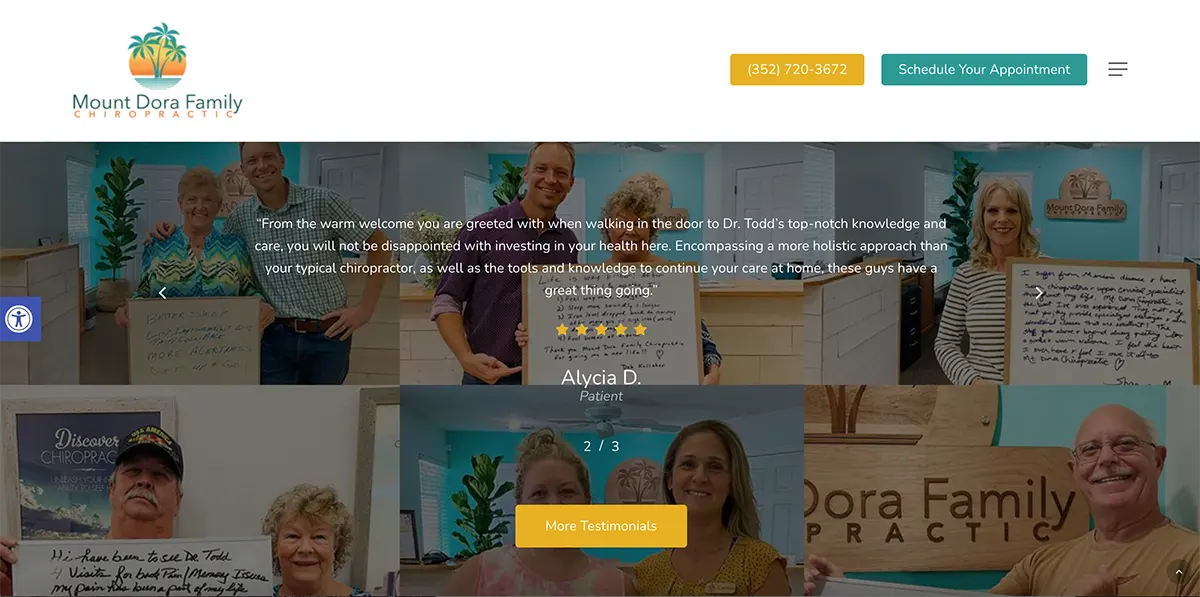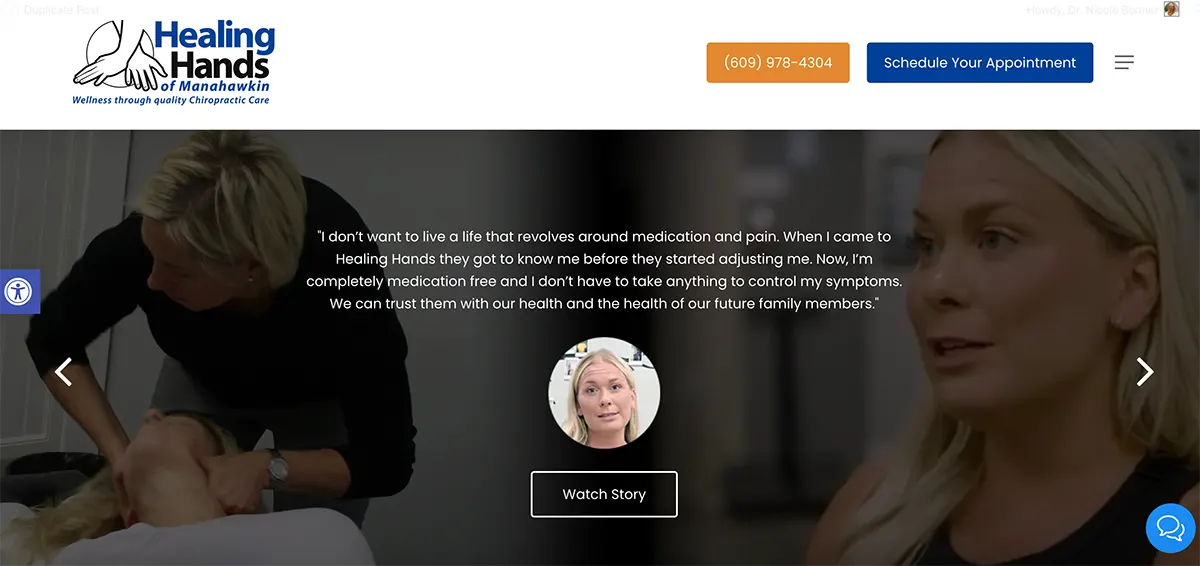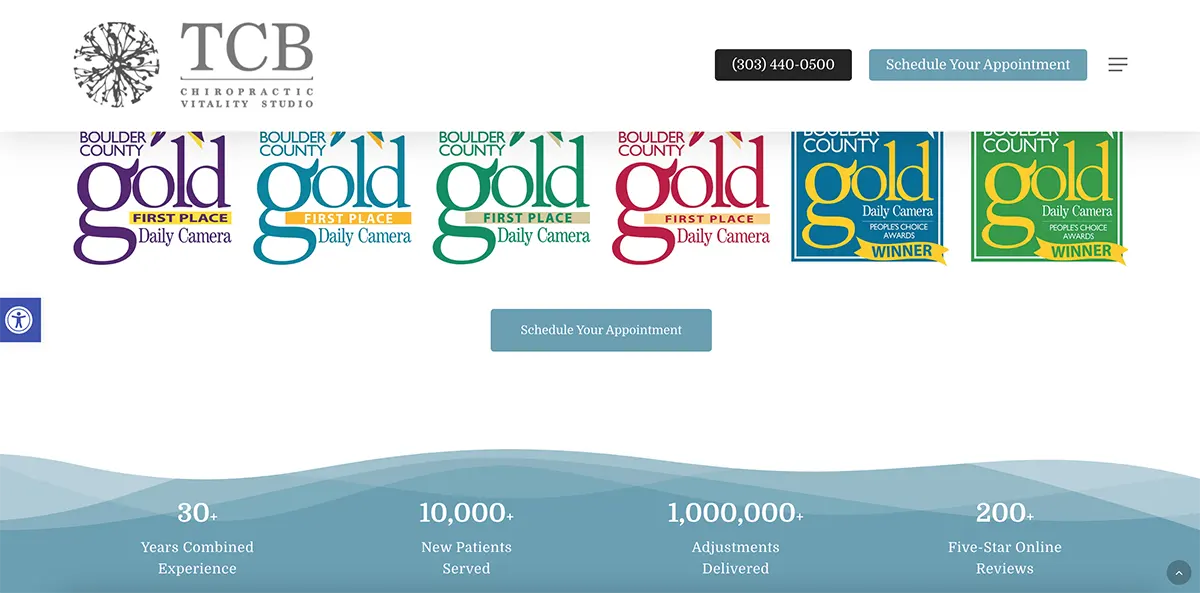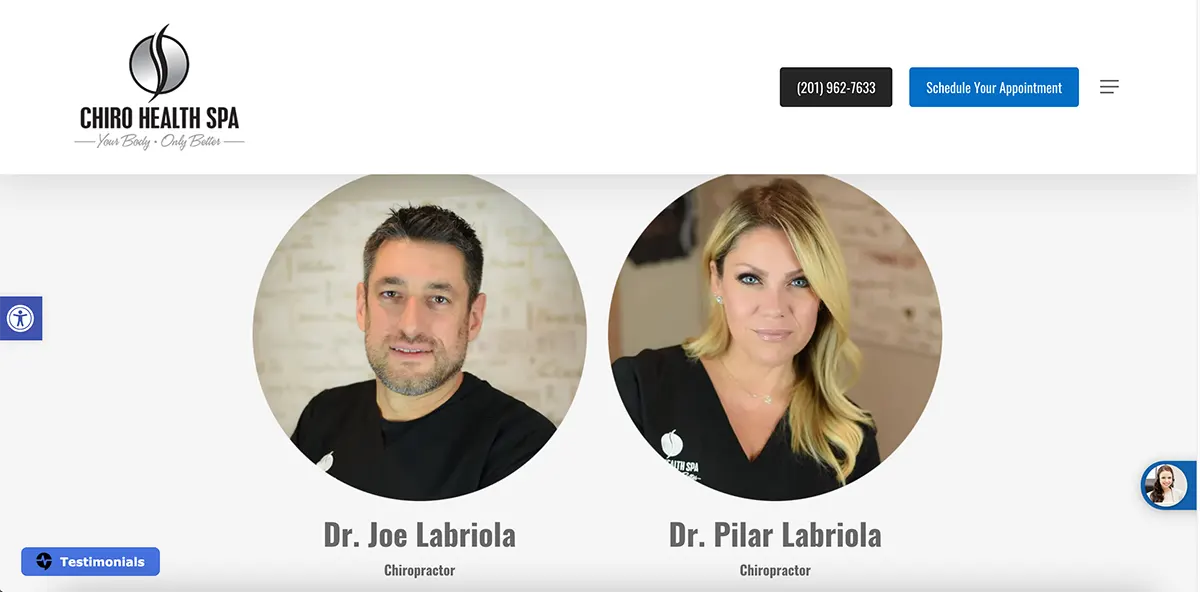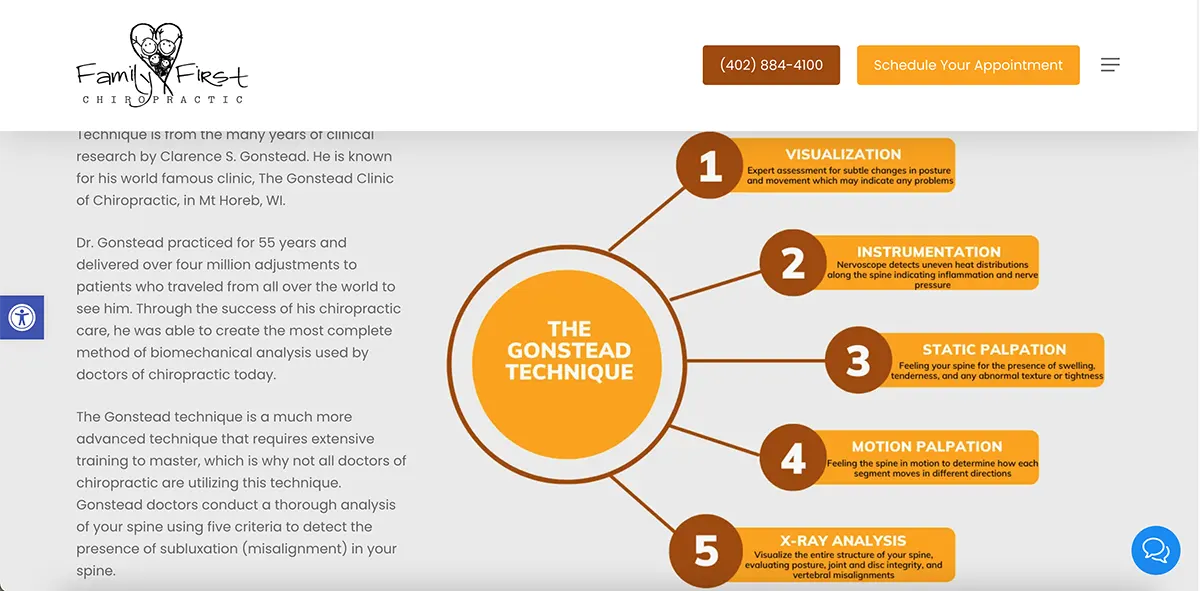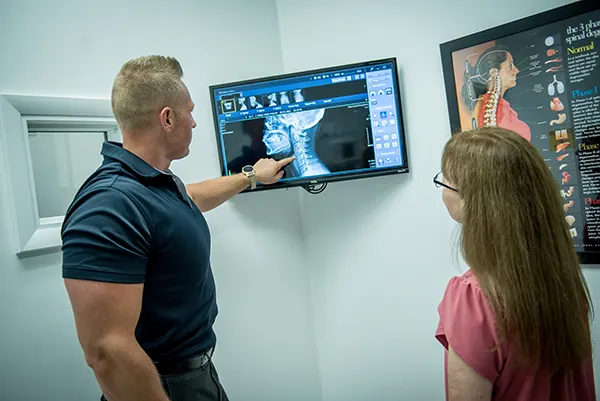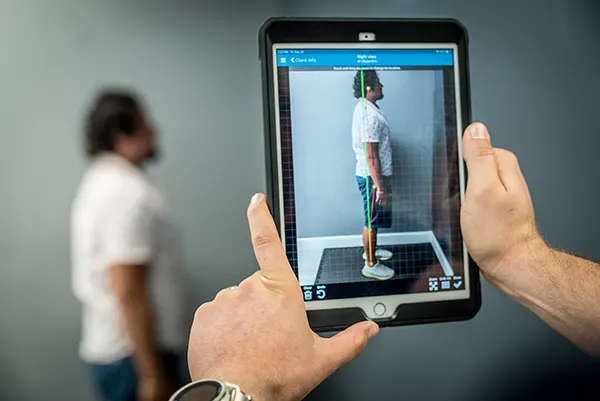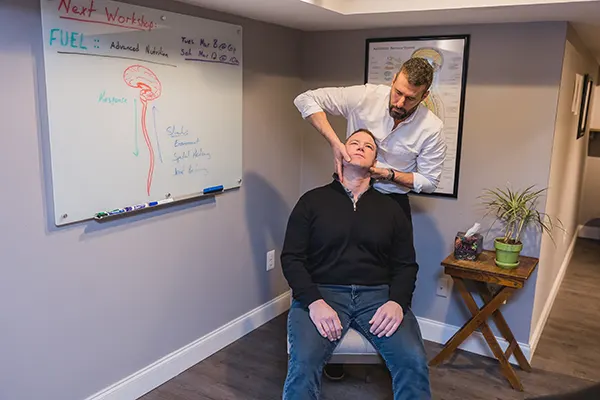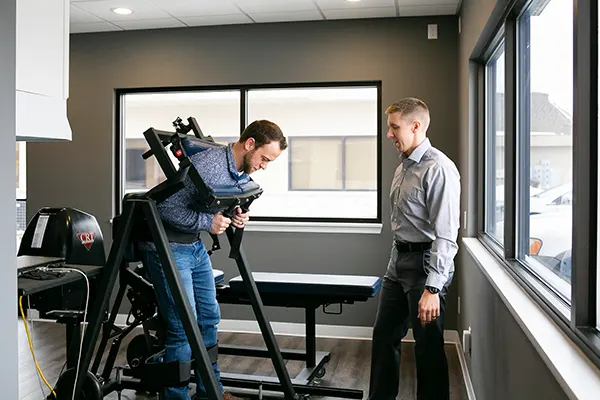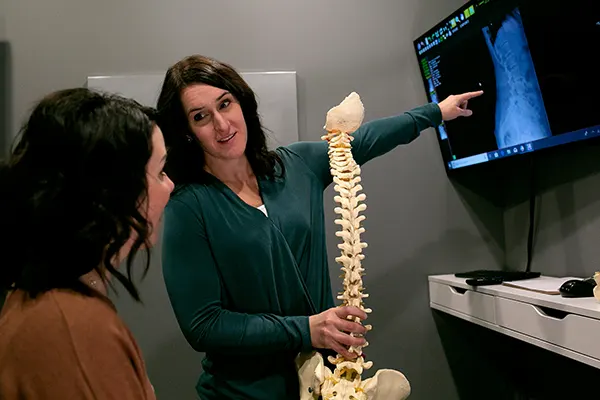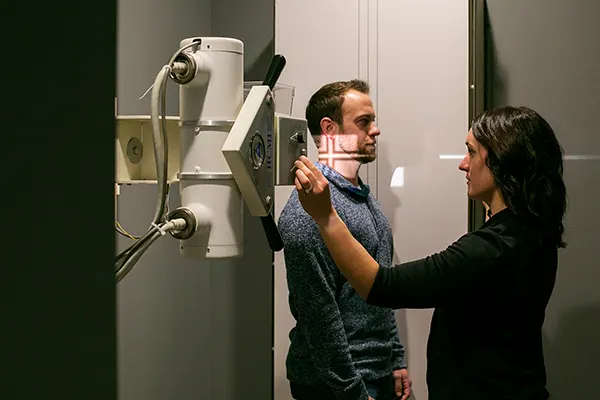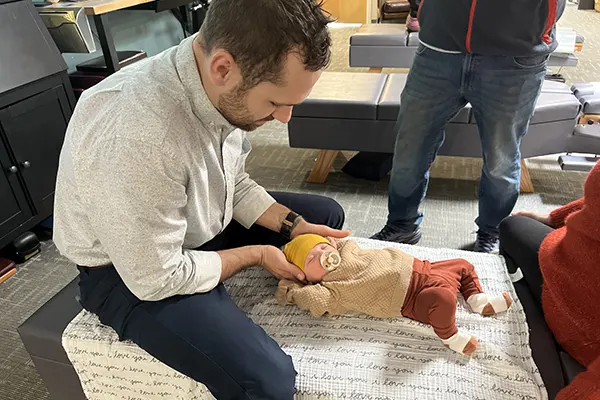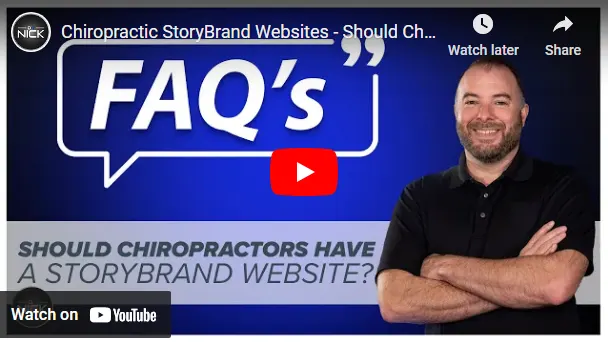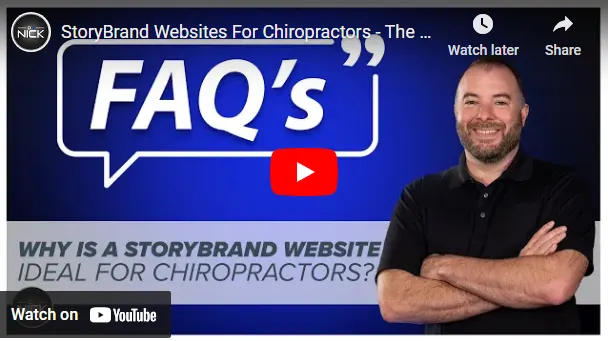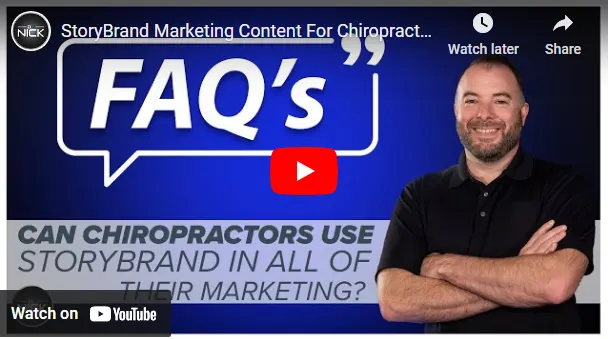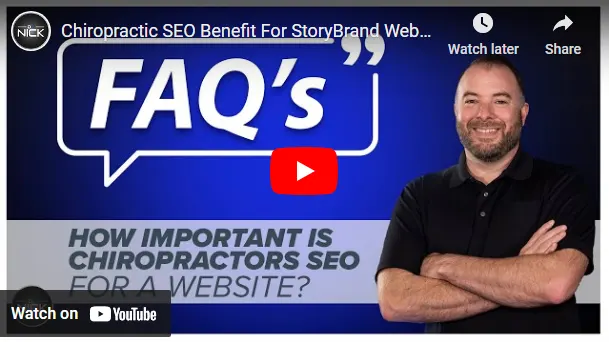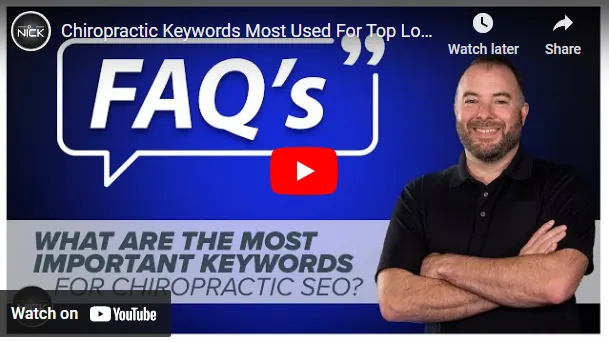Your website is your most important digital asset. It is the hub of your marketing wheel, where leads and patients can figure out who you are, what you believe, and, most importantly, how you can help them. The best website will meet a patient or potential patient where they’re at. Discussing the philosophy of chiropractic and how you can naturally improve their health is great, but that is a conversation to have once they’re in your office. Before that, we want to focus on what’s important to them.
The StoryBrand model knows that stories sell. They’re so confident about it that they put it in their name. This model creates custom websites that tell a practice’s story, making the patient the hero. People who land on your website have a problem they’re trying to resolve and want to know if you’re the person to do that. The StoryBrand process allows you to build a site custom to you and what you can provide to the hero on their journey. This makes them incredibly effective at converting new patients.
There are a lot of websites out there – and believe me, I’ve seen enough for one lifetime – that lack all sense of structure. It’s as if they just threw a bunch of stuff against the wall hoping something would stick, something would help them rank in search results, and enough people would come through the doors to make the practice profitable. StoryBrand is intentional – with who you’re pursuing, how you’re going to convert them, and the information you’re trying to convey.
LVRG Media is the only digital content marketing agency by chiropractors for chiropractors. Plus, we have the only StoryBrand-certified guide who is a chiropractor. Dr. Nick knows how to help doctors discover the story of their distinctive brand. He has a unique perspective, knowing what’s essential for a successful chiropractic website. You won’t have to waste any time teaching him the tenets of chiropractic care. Whether you’re ready to ditch your cookie-cutter website or give your site a bit of a facelift, Dr. Nick will guide you through the process for a result worth bragging about.
Chiropractic Websites: 5 Ways To Get The Most Out Of Your Most Important Digital Asset
1. Own Your Website
The discussion about renting or owning your website is eerily similar to renting or buying a home. If you’re just starting out on a shoestring budget, renting makes sense. You need a professional, well-built site, so outsourcing that for a few hundred dollars a month is worth your energy. But everyone’s goal is ultimately to own their home; it’s more secure and financially sound than renting. When you rent your website, the company that created it can take it away at any time, like when you stop paying your monthly fee. You might own the domain, but they own the design and content. And who knows what kind of services they’re providing. Are they a landlord that takes care of broken things and tries to improve your experience by optimizing your SEO and integrating your social and search profiles, or are they a landlord that is impossible to reach except when the rent is due?
If you’re out of the start-up phase of your practice, it’s time to own your most important online asset. Being at the whims of another company puts you in a precarious position. Our StoryBrand process helps you create a custom website that you’re in control of – you own it, even if you stop being a client. And while we’re working together, we’re constantly adding content and optimizing the site’s core vitals, functionality, and SEO juice. A transition from renting to owning can be nerve-wracking and sprinkled with technical hiccups, but at LVRG Media, we’ll help you create the home of your dreams.
2. Tell Your Practice’s Story
A good story is at the heart of all successful endeavors. Whether it’s a movie, an underdog’s journey to the World Series, or the rise of a politician from obscurity, human beings are innately endeared to a good story. That’s why incorporating storytelling into something as clinical as a website can attract and engage with the right people, giving you a chance to persuade them that you can help them solve their problems.
The StoryBrand process uses The Hero’s Journey to help you understand your patient’s problem and how you are uniquely positioned to solve it, clarifying your message and identifying and focusing on your ideal patient so you can convert! This framework is most successful when content is unique and specific. Relying on cookie-cutter content provided by website companies is not as compelling as your practice’s unique approach to wellness. The process may seem overwhelming, but you’re in good hands with the only StoryBrand-certified guide who’s also a chiropractor.
3. Create Consistent Content
Content is what separates you from your competitor down the street. People consume it all day, and they want something new and fresh each time they log in to Facebook or Instagram. Video content gets a lot of attention in this discussion, but written content is just as important. Creating written (and video) content for your website helps you build your brand and engage with your audience, but it is also critical for your search engine rankings. Google loves it when you have content. They constantly search for the most relevant websites to answer their customers’ queries. Relevant content will help your website be where we all want to be – at the top of the search results.
The StoryBrand process helps you understand your ideal patient and what they want. You’ll have a better idea of what they’re searching for and be able to create content relevant to their wants and desires. Then when they search for the answer, you’ll be at the top of the list.
4. Use Pictures of Your Practice
Patients want a sense of your practice before they step through the doors. Especially when it comes to chiropractic, they want to know what you and your practice look like and see you in action before they leap. You want this too! You want patients to make informed decisions about which practice they think they will vibe with best; it makes them more likely to commit and engage with their entire course of care.
Stock imagery is not the way to do this. Many cookie-cutter website companies use stock images because it’s easy, but it lacks the personal touch necessary to win over any new patients. You’re being judged against another practice, and you want to make sure you win out. Hiring a videographer or photographer to come out may be overwhelming, but the investment will pay off in the conversions. We provide clients with detailed shot lists and instructions for videographers about capturing what most people want to see when they’re shopping for a chiropractor. You want your website to reflect you, not two strangers smiling at each other with a sunset in the background.
5. Do SEO the Right Way
One of the primary goals for your website is to rank and dominate Google search results. With over 91% of the market share, 89 billion monthly visits, and over 8.5 billion daily searches, it’s no secret why.
As they consolidate search traffic, it becomes more critical to follow the rules Google lays out and implement the strategies they’ve told us are important to them. You could have the most aesthetically pleasing website with a limited color palette and accent colors, good use of white space, and professional visual elements, but if it doesn’t have the relevant content and technical build-out Google is looking for, you won’t get the organic traffic all your hours of design work deserves.
All aspects of SEO is an intricate puzzle with a lot of moving parts, and it’s helpful to have a specialist managing everything. At LVRG, we work with you to create the most relevant content that reflects who you are, ensure your online presence is consistent across the internet, and use our expertise to continually improve your website’s vitals and visibility.
The 7 Components Of StoryBrand Websites For Chiropractors
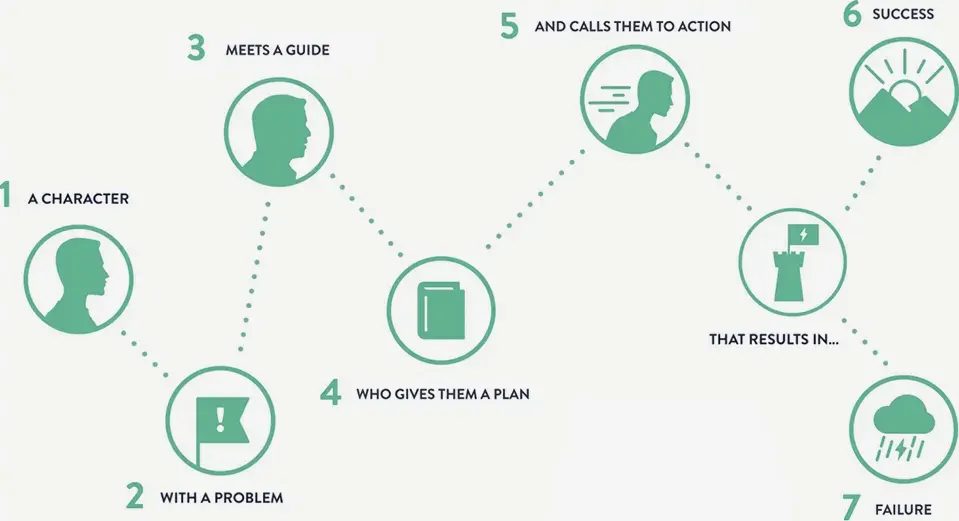
In Building A StoryBrand, best-selling author Donald Miller lays out a framework you may recognize. Whether Homer’s Illiad, Coppola’s Godfather, or Stanton’s Finding Nemo, the hero’s journey is one of the most compelling and transcending formulas.
1. Identity Transformation
All human beings want to transform. They want to become better.
This is your chance to illustrate how you can help the hero transform into a better version of themselves.
This is the foundation for your narrative. The reason that the hero sets on on their journey. You must understand where they are and where they want to go and demonstrate how you are uniquely positioned to get them there.
2. A Character
Every story begins with a character, our hero.
This is the patient you’re trying to reach.
You must center the hero in the story. You need to understand their needs, desires, and fears to create messaging that resonates with them. A website about you and your practice will not be compelling to your hero.
3. With A Problem
Odysseus had to fight the Trojans, Beowulf, Grendel, and Lilo is separated from his sister…before Stitch crashes to Earth. A hero must overcome an obstacle to get to where they’re going.
This is where you must address your heroes’ obstacle(s).
Are they dealing with a specific body signal or condition? Is the issue acute or chronic? Are they losing sleep and easily irritable? Does it prevent them from spending time with family and friends?
4. Meets A Guide
The hero isn’t looking to another hero for help – that’s not main character energy. The hero is looking for a guide to help them fulfill their destiny. That’s YOU!
You must demonstrate that you are the right guide for them to choose.
Establishing your authority is a mixture of empathy and knowledge – you can understand what your patients are going through and have the skill and expertise to help them.
5. Who Gives Them A Plan
Once the hero encounters their problem and finds their guide, they need a plan.
Your job is to devise the plan.
You want that plan to be clear and concise so you don’t intimate and lose your hero. A patient doesn’t have to know about every little detail of your curve correction plan, they just need to know the benchmarks – adjustments, decompression, therapeutic exercises, etc. You’re there to make sure they hit every step along the way.
6. That Calls Them To Action
With a plan in place, they have to know the first step of this redemptive journey.
You’re driving the bus and must let your hero know what you want them to do.
You want them to schedule an appointment – or buy supplements, or download a health course, or register for a workshop.
It should be clear that this is the ONLY THING they need to do. This call to action should be everywhere they scroll, calling out to them.
7. That Results In Success or Failure
At the end of their journey, our hero will either bask in their success or wallow in their failure.
We want to create urgency and motivation in our patients to seek care from you and your team.
Show them what success will look like if they can get rid of their neck pain or better manage their fibromyalgia. What will happen to their energy, hope, relationships, and quality of life?
At the same time, remind them what will happen if they don’t take action or choose you as their guide. How will the continued pain, dysfunction, and hopelessness affect their life?
These steps paint a picture for your potential patient. They can see themselves, that you understand them and can help them. You have a plan; all they have to do is jump. Or schedule an appointment.


